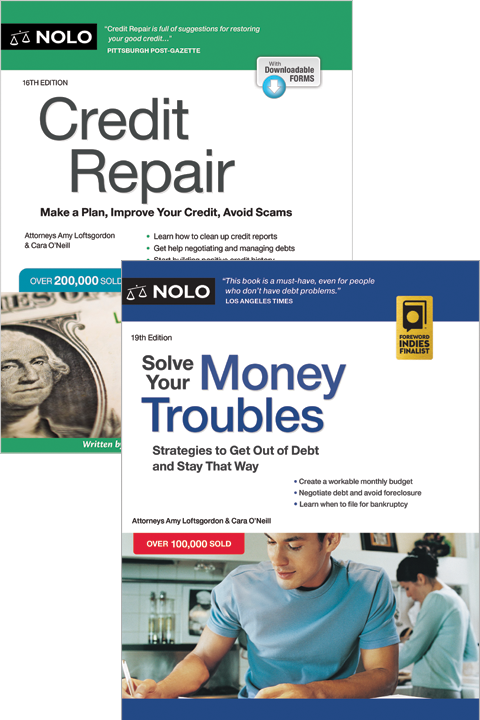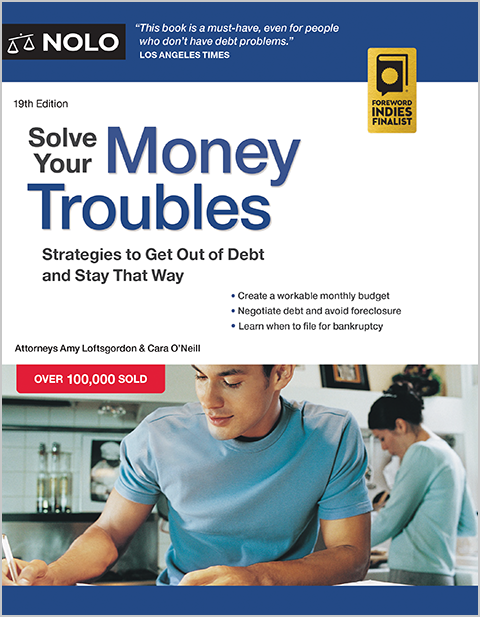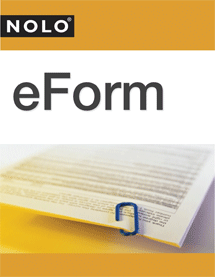Your plain-English guide to federal student loan forgiveness, discharge, disability relief, and more.
Federal student loan forgiveness, discharge, and cancellation programs offer borrowers relief from debt based on qualifying situations such as public service employment, disability, school closure, or proven misconduct by a school. Whether you're seeking debt relief through Public Service Loan Forgiveness (PSLF), teacher loan forgiveness, borrower defense, a closed-school discharge, or forgiveness due to total and permanent disability, new rules in 2025 have reshaped eligibility and application requirements for many programs. Understanding each option and following up-to-date guidelines is important for getting debt relief.
In this article, you'll learn which federal student loan forgiveness programs you might qualify for, eligibility criteria, and how to apply.
Student Loan Forgiveness vs. Debt Cancellation vs. Student Loan Discharge
Programs for Federal Student Loan Relief
Here's a summary of each program, with more details below.
- Closed-school discharge. You might qualify for a closed-school discharge if you couldn't complete your program because your school shut down.
- False certification discharge. If your school falsely certified your eligibility to receive a loan and you meet other eligibility requirements, you can qualify for a discharge.
- Unpaid refund discharge. You can generally discharge all or a portion of your loans if you never attended the school or withdrew from the school, but the school didn't refund the loan money.
- Borrower defense to repayment. If your school misled you or engaged in other misconduct in violation of state laws that convinced you to enroll or remain enrolled—and you can prove it—you can qualify for a discharge of the federal student loans you took out to attend the school.
- Total and permanent disability discharge. If you're totally and permanently disabled, you might qualify for a discharge.
- Public service loan forgiveness. Under this program, the remaining balance on your eligible loans is forgiven after you make 120 qualifying monthly payments while working full-time for a qualifying employer.
- Teacher loan forgiveness. If you work as a teacher, full-time for five complete and consecutive academic years in a low-income school or educational service agency—and you meet other qualifications—you might qualify to have up to $17,500 forgiven.
- Perkins loan cancellation and discharge. You might be eligible to have all or a portion of your Federal Perkins Loan canceled based on your employment, like if you teach in a qualifying school, or you're in a volunteer service, like if you serve in the Peace Corps.
- Death discharge. A student's death discharges any outstanding amount owed on federal student loans, including PLUS loans.
- Bankruptcy discharge. Though this kind of discharge is uncommon, if you can prove that repaying your student loans would cause an undue hardship, you can have your student loans discharged by filing for bankruptcy.
Closed-School Discharge
For-profit schools are well known for using glowing descriptions of future careers and high salaries to convince potential students to take out loans to attend, only to have the schools close before the students can finish the programs. If this sounds like something that happened to you, you might be able to discharge your loans.
False Certification Discharge
If the school didn't make sure you were qualified to attend the program, or if you fall into any of the other categories described below, you might be able to discharge your federal student loans. Typically, FFELs and Direct Loans can be discharged in the following situations:
The School Falsely Certified Your Ability to Benefit. The school falsely certified your ability to benefit from its training, and you didn't meet the applicable admission requirements.
Your Status Disqualifies You From Employment In the Field You're Studying. When you enrolled, you couldn't meet the licensing requirements for employment in the field for which you were to receive training because of a physical or mental condition, age, criminal record, or another reason. For example, suppose you had a felony record and enrolled in a security guard course, but your state doesn't permit prior felons to work as security guards. You would likely be eligible for a discharge in this situation.
Your Loan Is Based On Forgery. The school forged your signature on the loan papers, or the school endorsed your loan check or signed your authorization for an electronic funds transfer without your knowledge. But you're not eligible if you received the loan proceeds or they were applied to charges you owed to the school.
You're a Victim of Identity Theft. You can get a discharge if you were a victim of the crime of identity theft, and someone unlawfully took out student loans in your name.
Unpaid Refund Discharge
You can generally discharge all or a portion of FFELs and Direct Loans if you never attended the school or withdrew from the school, but the school failed to refund the loan money. Also, some states have funds to reimburse students who didn't get refunds due to them.
Borrower Defense to Repayment
You might qualify for loan forgiveness based on a "borrower defense to repayment" if you can prove that the school defrauded you. To learn more about making a borrower defense to repayment claim, visit the U.S. Department of Education Federal Student Aid website.
In 2022, the Department of Education updated regulations for borrower defense to repayment and closed school discharges to make it easier for eligible students to qualify for relief. However, the One Big Beautiful Bill Act, enacted in 2025, states that these updated rules will only apply to loans issued after July 1, 2035. So, existing loans will continue to be governed by the older, more restrictive rules, making it harder for current borrowers to obtain relief.
Total and Permanent Disability Discharge
You can get a discharge of your federal student loans if you're totally and permanently disabled. You can apply and include a licensed medical professional's certification saying that you meet the applicable criteria.
Also, many totally and permanently disabled student loan borrowers will get automatic discharges of their federal student loans unless they opt out of the process. Borrowers identified through an existing data match with the Social Security Administration (SSA) or the U.S. Department of Veterans Affairs (VA) get automatic total and permanent disability discharges. This policy change removes the requirement that these borrowers fill out an application before receiving student loan relief. If you don't receive an automatic discharge and you think you should have, you can submit an application.
Public Service Loan Forgiveness
You might be eligible for Public Service Loan Forgiveness (PSLF) if you have Direct Loans or you consolidate other federal student loans into a Direct Loan, and you work in public service, like for a government agency or a nonprofit organization. To qualify for this kind of forgiveness, you must make 120 payments under a qualifying repayment plan while employed full-time by a qualifying employer or employers.
However, be aware that borrowers taking out any new federal student loan, including borrowers who consolidate their loans, on or after July 1, 2026, will be eligible for only two repayment plans: the standard repayment plan or the repayment assistance plan (RAP). After July 1, 2026, the length of a standard repayment plan is determined based on the total amount borrowed:
- If you borrowed less than $25,000 (or have less than that amount outstanding), the repayment period is 10 years.
- If you borrowed $25,000 to $50,000 (or have that amount outstanding), the repayment period is 15 years.
- If you borrowed $50,000 to $100,000 (or have that amount outstanding), the repayment period is 20 years.
- If you borrowed more than $100,000 (or have that amount outstanding), the repayment period is 25 years.
If you're pursuing PSLF, payments in a 10-year standard plan qualify for forgiveness, but payments under standard repayment plans with repayment periods longer than 10 years don't qualify. So, borrowers who take out more than $25,000 in loans after July 1, 2026 (or consolidate) will only be able to use the RAP plan to make qualifying payments towards PSLF.
In 2025, the Department of Education finalized rules restricting eligibility for PSLF, effective in July 2026. These rules exclude organizations identified by the administration as engaging in unlawful activities, such as violating immigration laws or performing prohibited medical procedures, from being considered qualifying employers for PSLF. The attorneys general of 21 states and the District of Columbia, as well as some advocacy groups, sued the Education Department in response.
Teacher Loan Forgiveness
If you teach full-time for five complete and consecutive academic years in a low-income school or educational service agency (and you meet other qualifications), you might qualify for forgiveness of up to $17,500. Direct subsidized and unsubsidized loans, as well as subsidized and unsubsidized Federal Stafford Loans, qualify.
Perkins Loan Cancellation and Discharge
Those who do certain kinds of public service, like a teacher in a school serving students from low-income families, work at a certain nonprofit, or are employed in specific occupations, such as as a volunteer in the Peace Corps, in the military, or as an attorney in a federal public or community defender organization, might qualify for a Perkins Loan cancellation. Depending on the type of loan you have and when that loan was taken out, you might be eligible to cancel part or all of the loan.
Also, under the following conditions, your Perkins Loan may be discharged:
- bankruptcy
- death
- school closure
- service-connected disability (veterans), and
- total and permanent disability.
Death Discharge
Federal student loans can normally be discharged when a student or, in some cases, a parent dies.
What If the Student Dies? Federal student loans, like Direct Loans, FFEL program loans, and Perkins Loans, can be discharged if the student dies.
When a Parent's Death Can Discharge a PLUS Loan. With a parent PLUS loan, the loan may be discharged if the borrower (the parent) or the student dies. But if both parents signed for a PLUS loan, one's death doesn't wipe out the remaining debt.
Death Doesn't Necessarily Wipe Out Consolidated Loans. If spouses have consolidated their federal student loans together, one spouse's death wipes out only that spouse's portion. In the past, spouses could consolidate their federal student loans. Now, though, married couples aren't allowed to combine their student loans into a single, shared Direct Consolidation Loan.
Bankruptcy Discharge
Generally, borrowers have a tough time getting rid of student loan debt in a Chapter 7 or Chapter 13 bankruptcy, but if you can show that repaying your student loans would cause you an undue hardship, you can get a discharge. The test for determining undue hardship varies among courts. Also, many courts look at the undue hardship test as all or nothing; either your whole loan is discharged, or it isn't. Other courts have discharged a portion of a debtor's student loan.
Regardless of the test used, most courts are hesitant to discharge student loans. But if you have a very low income or your loan is from a for-profit trade school, you might have a better chance.
In 2022, the Biden administration introduced a new student loan bankruptcy policy, supposedly making it easier for borrowers to get a bankruptcy discharge of their student loan debts. You must fill out a form, in which you have to explain your financial difficulties. The Justice Department, along with the Department of Education, reviews the information provided, applies the factors that courts consider relevant to the undue-hardship inquiry, and then determine whether to recommend that the bankruptcy judge discharge your student loan debt.
How to Apply
To apply for federal student loan forgiveness, cancellation, or discharge, contact your loan servicer. If you have a Federal Perkins Loan, contact the school that made the loan or contact the loan servicer the school has designated. Again, discharges for totally and permanently disabled veterans are automatic unless the veteran opts out.
Tips for Staying on Track for Forgiveness
Your servicer can give you information about different options. But be aware that your servicer might not tell you about all the available forgiveness programs. For this reason, it pays to learn about your options before you call. Go to the Federal Student Aid website to get extensive information about each type of available program.
If you're planning on getting loan forgiveness, you need to make sure your loans qualify. You must have federal—not private—student loans. Also, for certain loan forgiveness programs, you must have specific kinds of federal student loans. For example, if you want to qualify for PSLF, you must have Direct Loans.
Some programs, such as PSLF, require you to make payments under a qualifying repayment plan. And, for certain programs, only payments you make while employed for a qualifying employer will count toward loan forgiveness. So, you need to become very familiar with program requirements and make sure you strictly adhere to them. And, keep an eye out for changes in loan forgiveness programs because eligibility criteria and requirements could change.
Getting Help With Your Federal Student Loans
If you have questions about your loans, forgiveness programs, and how to apply for them, contact your servicer. You can also get detailed information about federal student loans, forgiveness programs, and other ways to manage your student loan debt on the U.S. Department of Education's Federal Student Aid website.
If you need assistance in dealing with your servicer or need help understanding the different repayment, deferment, forbearance, and forgiveness options for federal student loans, consider consulting with a student loan attorney or debt negotiation attorney who deals with student loans.
Talk to a Lawyer
Need a lawyer? Start here.
How it Works
- Briefly tell us about your case
- Provide your contact information
- Choose attorneys to contact you
- Briefly tell us about your case
- Provide your contact information
- Choose attorneys to contact you



